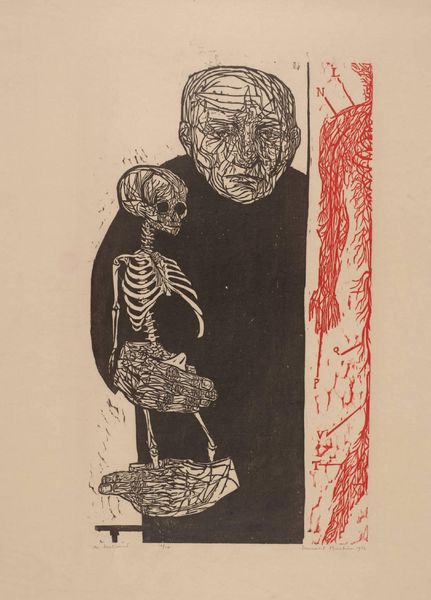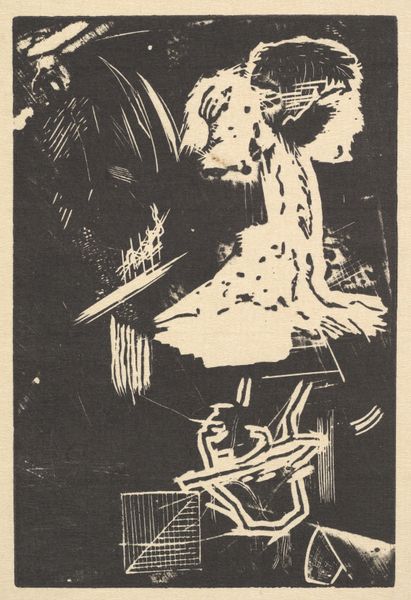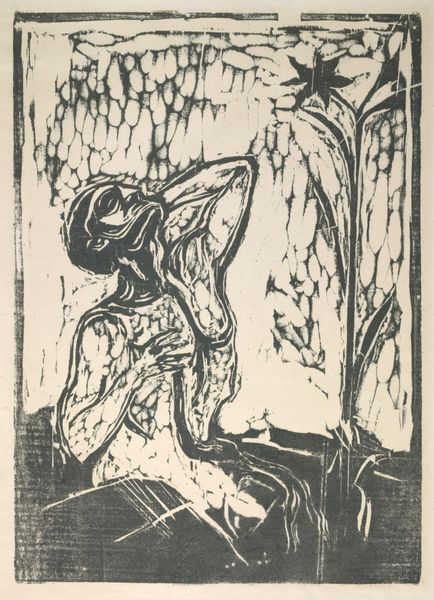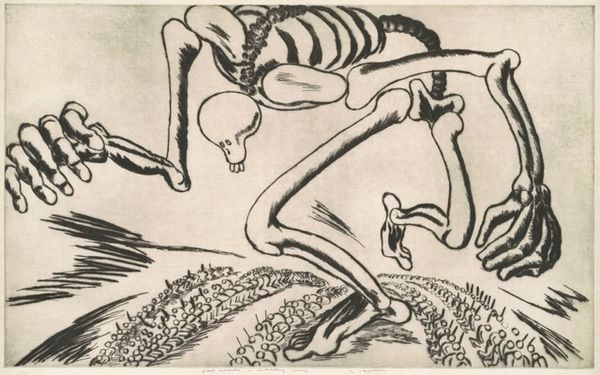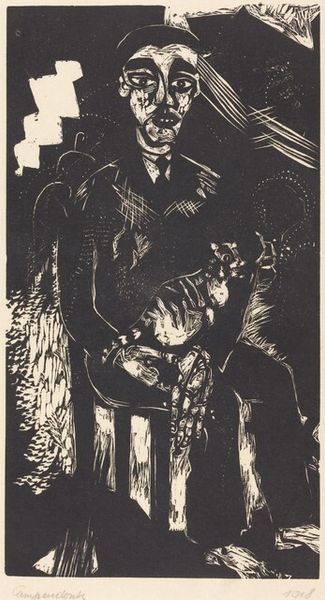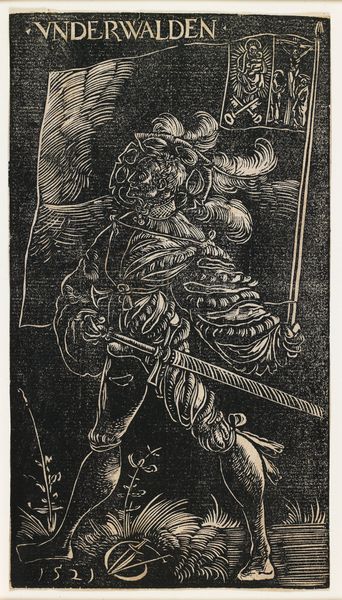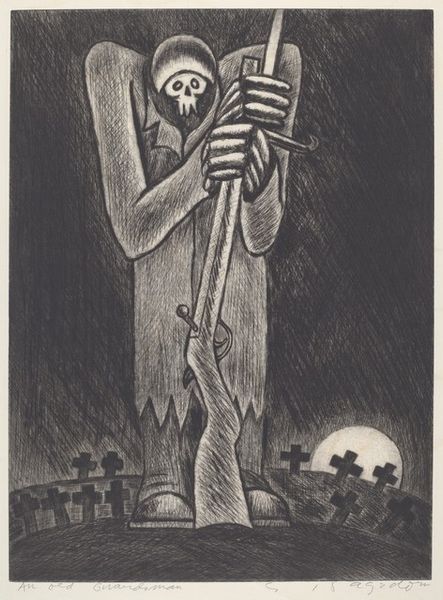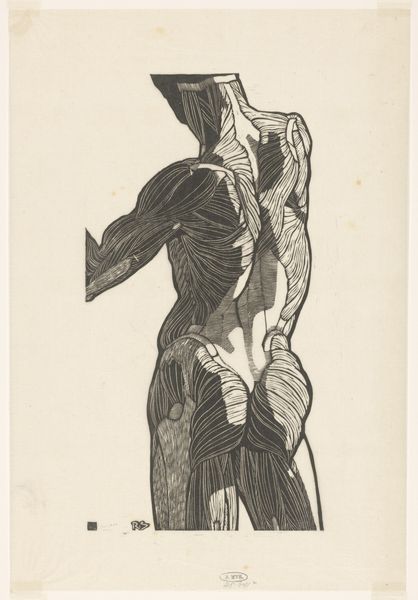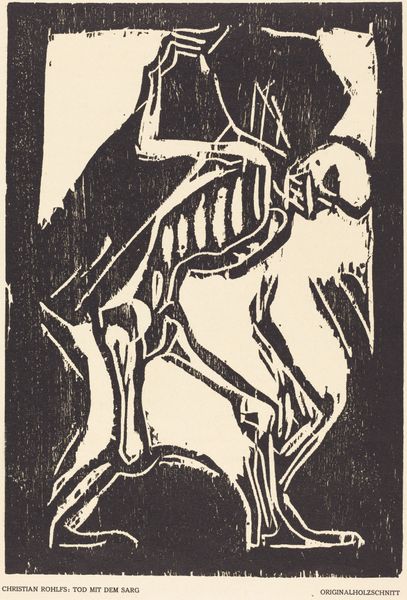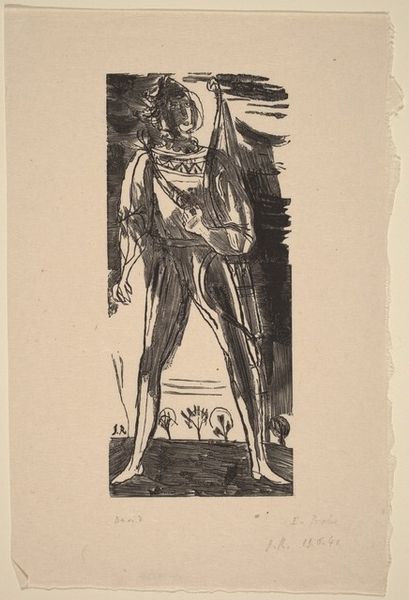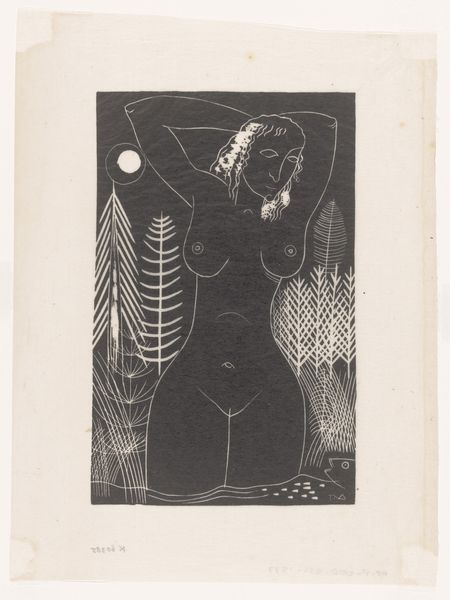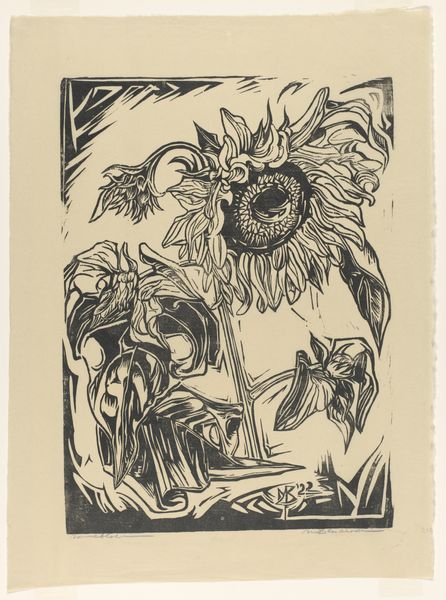
Dimensions: block: 169 x 156 mm sheet: 201 x 204 mm mount: 305 x 263 mm
Copyright: National Gallery of Art: CC0 1.0
Curator: My first thought seeing this artwork is simply “intense”. The skeletal figure combined with such deliberate lines makes for a striking impression. Editor: We're looking at "Song of Warning and Annunciation," a woodcut print created around 1929 by Stanislaus Szukalski. He worked across sculpture and drawing but this work typifies his graphic output. It feels steeped in symbolism doesn’t it? Curator: Absolutely. Notice how Szukalski rendered the skeleton not just as a symbol of mortality, but as a vessel of something else entirely. What do you make of the small architectural structure atop its head, almost like a bizarre wig? It suggests intellect or ideology weighing heavily, perhaps to the point of death? Editor: I see that too. For me, it also resonates with the interwar period it was produced in – that is, the years just after World War I – with a pervading sense of dread and uncertainty about the future and anxiety about Europe. Even the starkness of the black and white amplifies the emotional weight, almost shouting out its warnings, which clearly has political ramifications for the artist’s anxieties. Curator: That makes sense in how symbolic visual language builds an iconographic weight for a culture’s memories. It's as if Szukalski distilled anxieties and cultural fears into a single, potent image. Note the intricate patterns on the skeletal frame and the surrounding objects: the visual language of premonition. Do you feel like Szukalski, then, also seems to be warning us? Editor: Yes, because consider his biography. He wanted the piece to connect across cultural epochs—melding ancient and futuristic fears into the very now of the artwork as well, implicating our cultural conditions in the symbolic collapse represented here. The whole composition pushes at ideas of a shared history of warning… Curator: It's powerful how the skeletal figure remains unsettlingly contemporary, making those warnings continue to feel relevant. A perfect representation of shared trauma! Editor: Indeed. For all its darkness, there's something compelling about its capacity to reveal threads connecting cultural pasts and futures, even if the threads are made of shared fear and anxiety. Curator: Well, considering that, I'll never look at this stark woodcut quite the same again. Thank you!
Comments
No comments
Be the first to comment and join the conversation on the ultimate creative platform.
